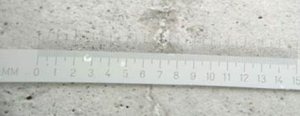 Left - concrete crack | Right - self-sealed crack
Left - concrete crack | Right - self-sealed crack
Self-Sealing is the ability to stop the flow of water by automatically closing cracks.
Krystol® Concrete Waterproofing self-sealing technology is based on principles that are very similar to the processes that occur during the hydration and hardening of concrete.
Importance of Self Sealing
- Decreases water permeability (Increases corrosion resistance)
- Re-seals new cracks that form during shrinkage, settling, etc.
- Decreases long-term maintenance and repair costs
Four Main Mechanisms
- Physical - Filler Effect and the swelling of Cement Matrix
- Chemical - Continued Hydration and the precipitation of insoluble products
Filler Effect
- Temporary Sealing - Debris carried into the crack by flowing water is deposited and clogs the flow of water.
- Easily removable – high water pressure will wash away debris or degrade over time
Continued Hydration
- Occurs when un-hydrated cement particles are exposed to water from the crack
- The hydrating cement matrix seals by growing into the void between the crack walls
- Ongoing process as long as un-hydrated cement is available
Precipitation
- Main contributor to self-sealing
- Formation of insoluble crystalline precipitates occurring over several weeks which deposits across the width of the crack
- Krystol products act as a catalyst to accelerate the natural formation of precipitates.
- KIM increases sealing capacity from 0.2 mm to 0.5 mm crack widths






